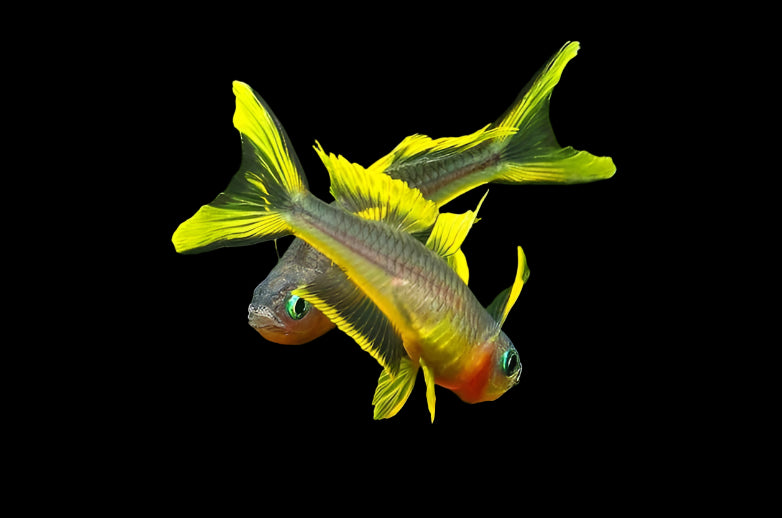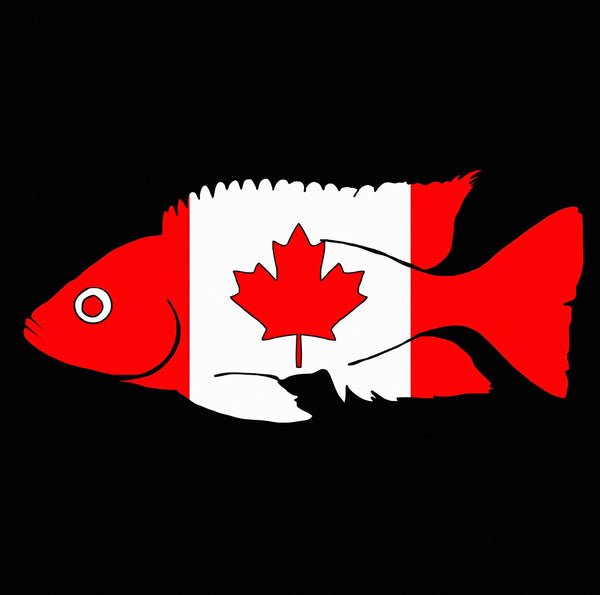SKU:3118
FORKTAIL BLUE EYE RAINBOW (pseudomugil furcatus)
FORKTAIL BLUE EYE RAINBOW (pseudomugil furcatus)
Out of stock
Couldn't load pickup availability
Less than two inches when fully grown, this small rainbow is a truly beautiful fish that fits in well with other small shoaling fish in a well-planted community aquarium. Providing that this fish is transferred over to its new aquarium home slowly, they will adapt to a wide range of water conditions ranging from soft and slightly acidic water to hard and alkaline.
Breed Overview
COMMON NAMES: Forktailed Rainbow Fish, Forktail Blue Eye
SCIENTIFIC NAME: Pseudomugil furcatus
ADULT SIZE: 2 inches
LIFE EXPECTANCY: 3 years
Characteristics
Family Pseudomugilidae
Origin New Guinea
Social Peaceful
Tank Level Middle
Minimum Tank Size 30 gallons
Diet Omnivore
Breeding Spawners
Care Easy
pH 7.0 to 8.0
Temperature 75 to 79 degrees F/24 to 26 degrees C
Origins and Distribution
Forktailed Rainbow Fish are native to Peria Creek, Kwagira River, eastern Papua New Guinea, meaning that they are available in the wild in only a very small geographic area in the Milne Bay province. They occasionally travel into nearby rivers and tributaries, probably as a result of drainage among the different waterways. These fish prefer slow-moving streams lined with heavy vegetation; these environments make it easy for them to find their favorite foods: zooplankton, phytoplankton, and invertebrates. Pseudomugil furcatus usually mate within the shoal and lay their eggs among feathery-leafed plants.
Today, very few Forktailed Rainbow Fish are collected in the wild. Because they are easy to breed, they are bred in captivity for the aquarium trade.
Colors and Markings
The Forktailed Rainbow Fish or Pseudomugil furcatus is a very attractive species with blue eyes, a silvery body, and bright yellow stripes on the top and bottom of the body in the breeding season. Two upturned almost wing-like pectoral fins, bright yellow in color along with bright yellow dorsal fins in breeding season make this little gem a great addition to any community aquarium.
Tankmates
Forktailed Rainbow Fish are a shoaling species and should be kept with between six and ten of their own kind. A generally peaceful fish, they can live comfortably with smaller goby or catfish species, danios, tetras, rasboras, dwarf cichlids, and other small rainbowfish. Do avoid keeping this species in a tank with slower-moving fish or fish with long, trailing fins as they do sometimes nip and can be a bit aggressive.
Habitat and Care
When creating a habitat for your Forktailed Rainbow Fish, remember that their native environment is slow-moving water with a great deal of vegetation. To recreate a similar habitat, choose a 30 gallon or larger aquarium and add a dark, fine, sandy or rocky substrate. Decorate with river rocks, driftwoods, rooted plants, and floating feathery-leafed plants. Floating plants and a dark substrate will not only bring out their colors to best effect, but the fish will be more comfortable and calm, with this touch of their natural environment added. Live plants are necessary for this fish to thrive. Be sure the water is well oxygenated; to do this, you'll need a good filtration system that doesn't create too much turbulence.
The Forktailed Rainbowfish is a very active fish, not only fast but agile as well, swimming, twisting and turning in and out of plants playfully all day. They are a middle zone fish and are in motion as long as aquarium lights are on. It is best to keep two males and four to six females for the best and most active displays. Forktailed Rainbow Fish need plenty of time to acclimatize to a new tank environment. Quick exposure to different water chemistry and temperature can shock their systems.
These fish are short-lived in nature, and because of this they mature quickly, breed young and are over the hill by one year of age. Males are prime at about eight months, after one year to 15 months they will develop a pigeon chest, at which time they are too old or mature to breed. However many Forktailed Rainbow Fish live to be very old fish in a community aquarium, just no longer prime for breeding.
Diet
A great advantage of the Forktailed Rainbow Fish is their feeding requirements: they have almost no special needs. Choose flake, micropellets, and small frozen foods such as daphnia, baby brine shrimp (Artemia nauplii), Cyclops, etc.
Sexual Differences
The males can be distinguished by their clearer colors and the striking fin shape (curved and almost wing-like) which are bright yellow. Females and juveniles have the same basic coloring as males, but the colors are not as brilliant.
https://www.thesprucepets.com/forktailed-rainbow-fish-4071595
Share


